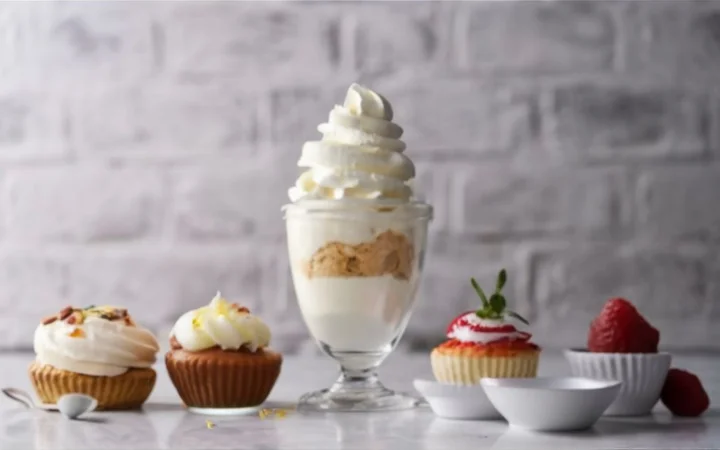In the culinary world, the quest for the perfect dollop of heavy whipping cream can turn an ordinary dessert into an extraordinary experience. This article delves deep into the art and science of making heavy whipping cream, guiding you through each step with precision and care. From understanding the basics to exploring creative uses and troubleshooting common problems, we’ve got you covered. So, let’s embark on this creamy journey, ensuring your whipped cream is always fluffy, delicious, and just right.
Introduction to Heavy Whipping Cream
Understanding Heavy Whipping Cream
Whipped cream, that luscious topping that graces everything from pies to hot cocoa, begins with one key ingredient: heavy whipping cream. But what exactly is it? At its core, heavy whipping cream is a dairy product that contains a high percentage of milk fat, typically around 36% or more. This high fat content is crucial because it allows the cream to be whipped into a light, airy texture that can hold its shape.
Now, you might be wondering, “Is there a difference between heavy cream and heavy whipping cream?” Well, they’re essentially two peas in a pod. Both must contain at least 36 percent milk fat. However, the term “whipping cream” might also refer to “light whipping cream,” which has a slightly lower fat content and doesn’t hold its shape as well when whipped For the best results, sticking to heavy whipping cream is your best bet.
Definition and Basic Information
Heavy whipping cream is the magic behind the fluffy, cloud-like topping that enhances the flavor and texture of desserts. Its versatility and rich taste make it a staple in both professional kitchens and home pantries. Understanding its properties and how it transforms from a liquid to a voluminous topping can elevate your culinary creations to new heights.
Heavy Cream vs. Whipping Cream: Making Heavy Whipping Cream Clear
The dairy aisle can sometimes feel like a maze with all the different cream options available. While heavy cream and heavy whipping cream are often used interchangeably in recipes, it’s important to note the slight distinctions. As mentioned, the main difference lies in the fat content, with heavy cream and heavy whipping cream being richer than their lighter counterpart, light whipping cream. This distinction affects not only the cream’s ability to whip but also its richness and stability in recipes. If you want to know more here’s a detailed article about what’s the diffrence between heavy cream and whipping cream.
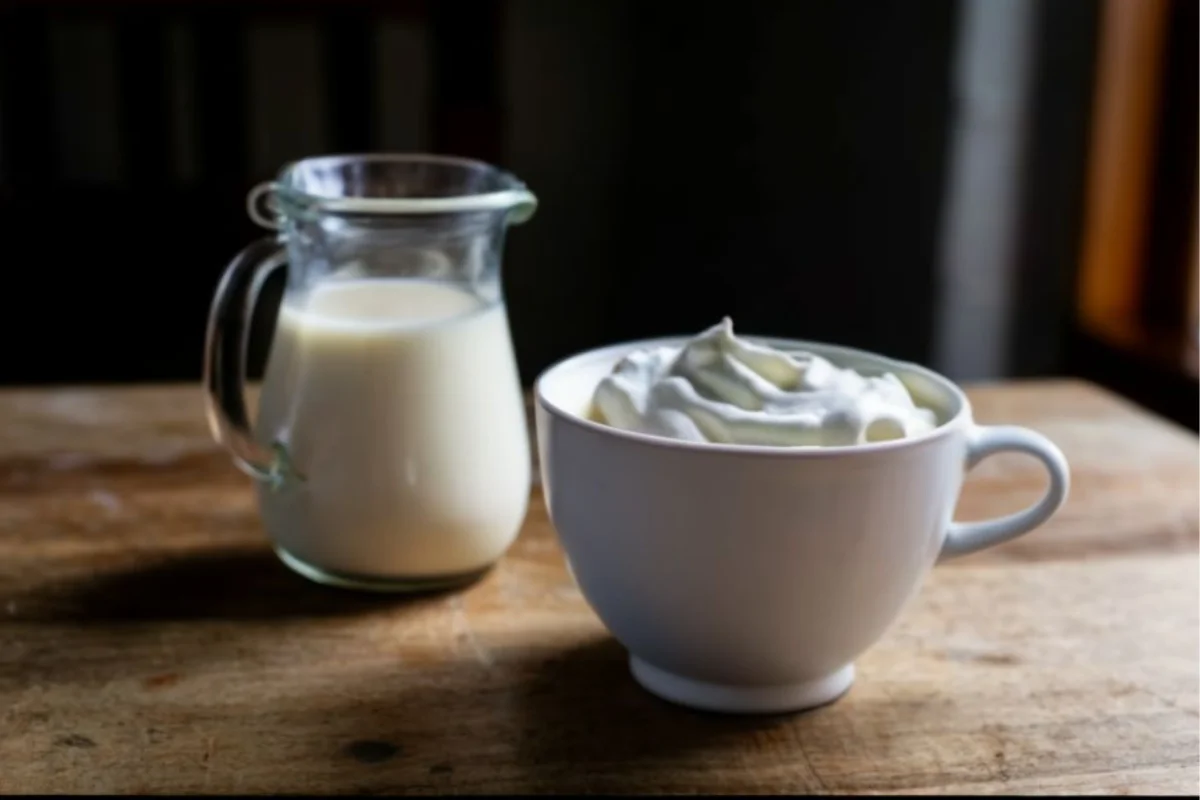
By starting with a clear understanding of heavy whipping cream, you’re well on your way to mastering the art of making it from scratch. In the next sections, we’ll dive into the ingredients and tools you’ll need, followed by a step-by-step guide to achieving the perfect whipped cream every time. Stay tuned as we whisk our way through the essentials, ensuring your whipped cream is nothing short of perfection.
Ingredients and Tools Needed
Key Ingredients for Heavy Whipping Cream
When it comes to making heavy whipping cream, simplicity is key. You only need three main ingredients: heavy cream, confectioners’ sugar, and vanilla extract. The heavy cream acts as the base, providing the fat content necessary for whipping. Confectioners’ sugar sweetens the cream and helps stabilize it, while vanilla extract adds a hint of flavor that complements a wide range of desserts.
Overview of Ingredients
Let’s break it down further. Start with cold heavy cream; the colder it is, the better it whips. Next, sift your confectioners’ sugar to avoid any lumps. A little goes a long way in adding sweetness and structure. Finally, pure vanilla extract will elevate your whipped cream from good to great, infusing it with a subtle, aromatic flavor.
Milk Fat’s Role in Whipping Cream
The fat content in heavy cream is what makes all the difference. It’s the secret behind the cream’s ability to hold air and transform into a fluffy topping. Remember, the higher the milk fat, the more stable and luxurious your whipped cream will be.
Tools for the Perfect Whipped Cream
Achieving that perfect peak in your whipped cream also depends on the tools you use. An electric mixer or a hand whisk can do the job, but each has its pros and cons.
Choosing the Right Whisk or Mixer
An electric mixer will save you time and effort, whipping the cream into shape in just a few minutes. For those who prefer a more hands-on approach, a hand whisk will do the trick, though it requires more elbow grease.
Temperature’s Impact on Whipping Cream
Temperature plays a crucial role in the whipping process. Using a cold bowl and beaters can help keep the cream cold, which is essential for achieving the perfect consistency. Some even swear by chilling their tools in the freezer for a few minutes before starting.
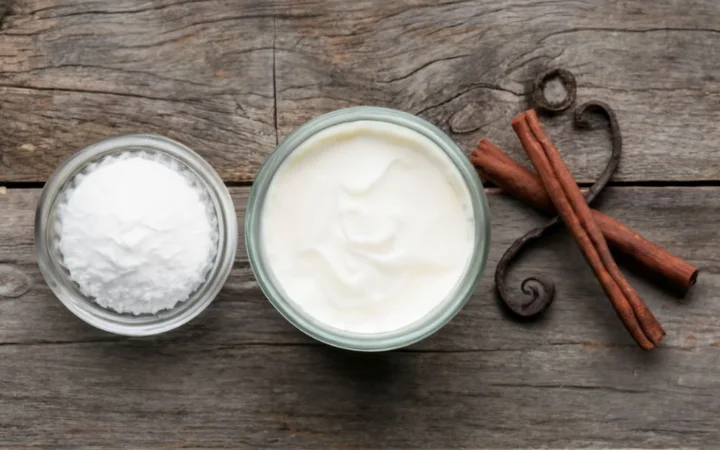
With the right ingredients and tools in hand, you’re all set to whip up your own heavy whipping cream. Keep these tips in mind, and you’ll be on your way to creating a delicious, fluffy topping that will elevate any dessert. Stay tuned for our next section, where we’ll walk you through the whipping process step by step.
Step-by-Step Guide
Preparing Your Ingredients and Tools
First, gather your ingredients. Make sure everything is cold. This helps in whipping. Chill your bowl and beaters too.
The Whipping Process Explained
Now, let’s whip up some cream. The process is simple but requires attention to detail.
Achieving the Perfect Consistency
Start whipping the cream on a low speed, following this step-by-step guide to making whipped cream for perfect results. Gradually increase the speed to medium. This method introduces air slowly and evenly. Look for soft peaks. Then, add sugar and vanilla. Continue whipping until stiff peaks form. Be careful not to overbeat. Overbeaten cream turns buttery.
Avoiding Mistakes in Whipping Cream Preparation
Keep an eye on the consistency. Stop when peaks are stiff. Use cold ingredients and tools. This makes a big difference. Also, don’t rush the process. Patience is key to perfect whipped cream.
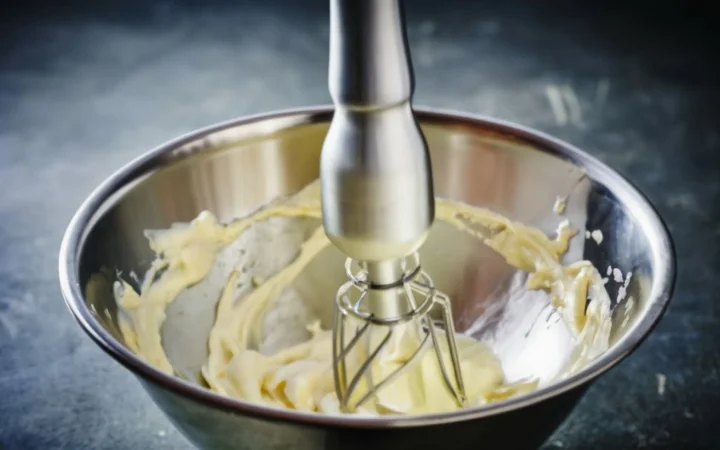
Following these steps will help you make perfect heavy whipping cream as we explain it in our guide. It’s easy once you get the hang of it. Enjoy your fluffy, homemade topping on your favorite desserts. Next, we’ll explore how to customize your whipped cream with flavors and how to store it properly.
Variations and Flavors
Customizing Your Whipped Cream
Mastering the art of making basic heavy whipping cream is just the beginning. The real fun begins when you start experimenting with flavors and sweeteners, transforming your whipped cream into a versatile topping that can elevate any dessert from ordinary to extraordinary.
Adding Flavors and Sweeteners
To begin with, experimenting with different extracts can significantly alter the flavor profile of your whipped cream. Vanilla is classic, but why not try almond, peppermint, or even orange extract for a refreshing twist? Each of these can add a unique layer of flavor, making your whipped cream a perfect complement to a wide range of desserts.
For those looking to explore beyond traditional flavors, incorporating ingredients like cocoa powder or melted chocolate can create a rich, decadent topping perfect for chocolate lovers, as detailed in these whipped cream recipes and variations.
On the healthier side, replacing confectioners’ sugar with natural sweeteners like honey or maple syrup can introduce a subtle complexity to the flavor while reducing the processed sugar content. This small change can make a big difference in both taste and nutritional profile, appealing to those looking for healthier dessert options.
Vegan and Dairy-Free Alternatives
Moreover, dietary restrictions shouldn’t prevent anyone from enjoying the delight of whipped cream, as we discuss in our article on sugar-free whipped cream Coconut cream, for instance, offers a fantastic vegan alternative to traditional heavy cream. When chilled and whipped, it achieves a similar texture and richness, making it an excellent option for vegan desserts.
Additionally, almond and soy milk can serve as bases for dairy-free whipped cream when combined with a thickening agent like agar-agar. These alternatives not only cater to different dietary needs but also introduce new flavors and textures to explore in your culinary creations. for more informations check healthline article about Can Heavy Whipping Cream Be Part of a Healthy Diet?
Storing and Using Heavy Whipping Cream
Creative Uses for Whipped Cream
Ensuring your homemade whipped cream stays fresh and delicious involves proper storage techniques. Firstly, always use an airtight container when refrigerating whipped cream. This simple step can significantly extend its shelf life, keeping it fresh and fluffy for up to three days. To ensure your dairy products, including whipped cream, maintain their freshness and quality, follow these effective tips and techniques for storing dairy products.
Secondly, for those looking to store whipped cream for longer periods, freezing offers a viable solution. By spooning dollops of whipped cream onto a parchment-lined baking sheet and freezing them, you create individual servings that can be easily stored and used as needed. Once frozen, transfer the dollops to a freezer-safe bag or container, where they can be kept for up to three months. This method preserves the texture and flavor, making it a convenient option for future use.
Creative Whipped Cream Uses
Whipped cream’s versatility extends far beyond its role as a simple topping for desserts. Firstly, it can serve as a luxurious filling for pastries, eclairs, and layered cakes, adding a light, creamy texture that complements the richness of the pastry.
Secondly, whipped cream can enhance the natural sweetness of fresh fruits, making it an ideal accompaniment to fruit salads or as a topping for berry tarts, especially when you try our strawberry whipped cream recipe.
Lastly, for those looking to experiment with savory applications, incorporating herbs and spices into whipped cream can yield surprising and delightful results. A dollop of basil-infused whipped cream can transform a simple tomato soup, while chive-flavored whipped cream can add a new dimension to baked potatoes.
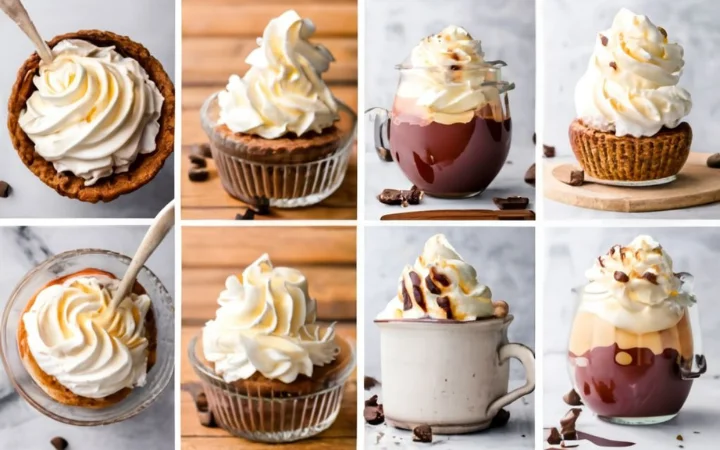
By exploring these storage tips and creative uses, you’ll discover that whipped cream is not just a topping but a versatile ingredient that can enhance a wide array of dishes, both sweet and savory. In the next section, we’ll dive into troubleshooting common issues and answering frequently asked questions to ensure your whipped cream turns out perfectly every time.
Troubleshooting and FAQs
Troubleshooting Heavy Whipping Cream
Even the most experienced cooks can sometimes face challenges when making heavy whipping cream. Let’s tackle some common issues to ensure your whipped cream is always fluffy and perfect.
Firstly, if your cream won’t whip, the problem often lies in the temperature. Cream, bowl, and beaters must be cold. If they’re not, the cream struggles to form stiff peaks. Pop everything in the fridge for a bit, then try again.
Secondly, overbeating is a frequent mishap. It turns your lovely whipped cream into butter. The moment you see stiff peaks, stop. It’s better to err on the side of under-whipping than over-whipping.
Lastly, if your whipped cream is too runny, you might not have whipped it enough, or it’s too warm. Chill it fora a few minutes, then continue whipping. Adding a bit more confectioners’ sugar can also help stabilize it.
Frequently Asked Questions
- Can you make heavy whipping cream from regular milk? Yes, but it’s a bit of a process. You’d need to add butter to increase the fat content. However, for best results, starting with store-bought heavy cream is easier and more reliable.
- How long does homemade whipped cream last? In an airtight container in the fridge, it can last up to three days. Its freshness and texture are best in the first 24 hours, though.
- Can you freeze whipped cream for later use? Absolutely. Freeze dollops on a baking sheet, then transfer to a freezer bag. They’re perfect for adding to hot drinks or desserts. Thaw at room temperature for a few minutes before use.
By addressing these common concerns and questions, you’re now equipped to handle any whipped cream challenge that comes your way. Remember, making heavy whipping cream is as much an art as it is a science. With a bit of practice and these tips in mind, you’ll be whipping up perfection in no time. Need to know more check king arthur baking article on How to fix whipped cream article. Stay tuned for our final thoughts and additional tips to take your whipped cream to the next level.
Conclusion: Mastering Whipping Cream
Making heavy whipping cream at home is a simple yet rewarding skill that elevates desserts. This guide covered everything from basics and troubleshooting to flavor variations. Remember, success lies in cold ingredients, avoiding overbeating, and experimenting. Homemade whipped cream not only enhances dishes but also brings joy and satisfaction to your culinary adventures. Embrace the process and enjoy the delicious results of your efforts. Happy whipping!
